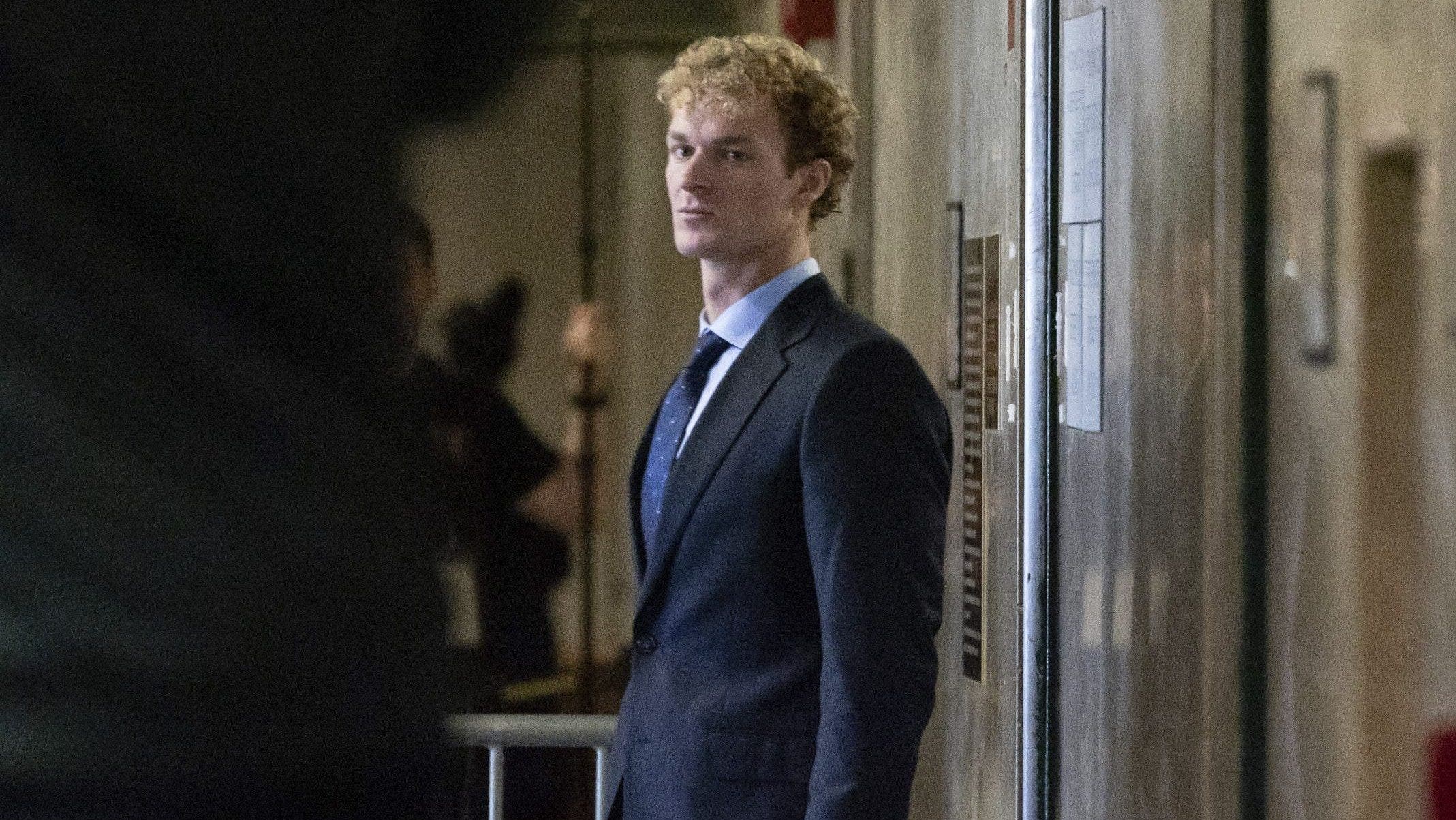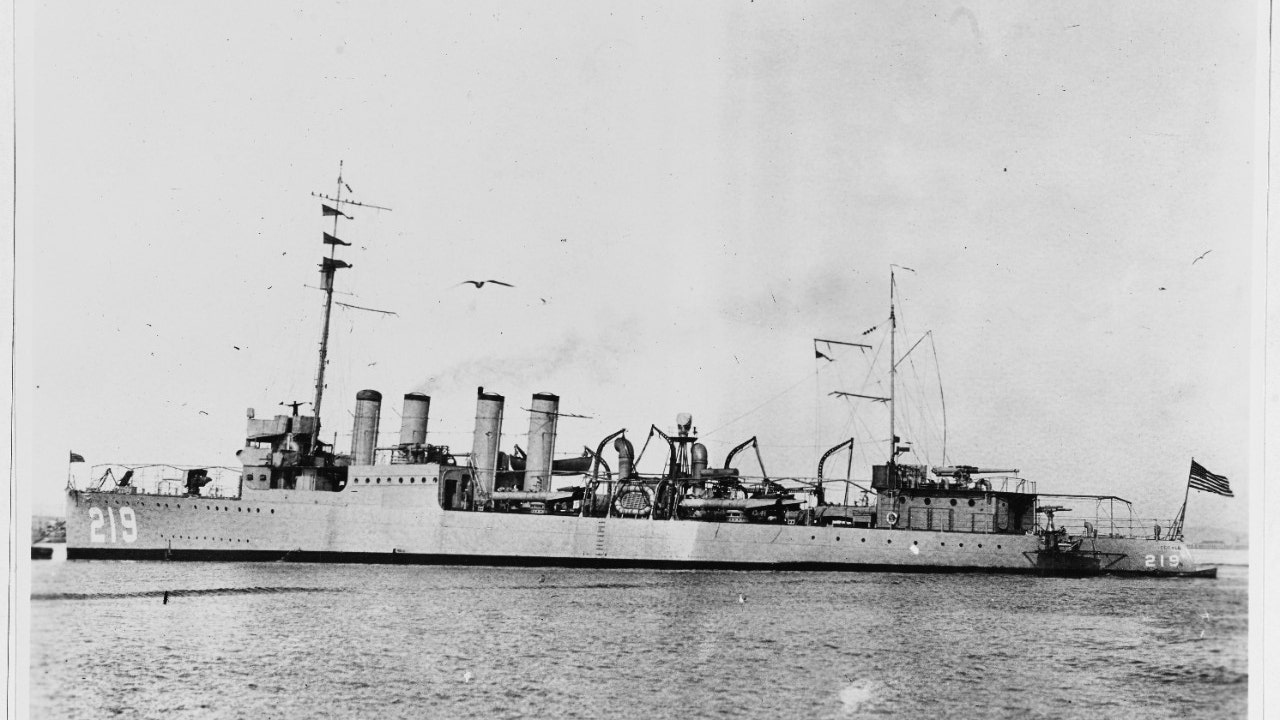At first glance, the cute, three-story home with the black shutters and wrought-iron fence looks like an American Dream.
Then you realize: it’s that house.
The five-bed, four-bath Dutch Colonial on Ocean Avenue in Amityville was the site of one of New York’s most infamous mass murders, when a young man shot all six members of his family as they slept with a .35-caliber Marlin rifle, one by one.
The bloodshed wrought by Ronald DeFeo Jr. the morning of Nov. 13, 1974 was straight out of a horror movie, and eventually became one: the 1979 classic “The Amityville Horror” starring Margot Kidder and James Brolin as a couple who buy and move into the empty house after the murders only to meet a demonic presence.
DeFeo, then 23, was a heavy drug user known as “Butch.” Over the years he blamed everything from voices in his head, to hired killers, to his own sister, for the massacre.
He was sentenced to six terms of 25 years to life for killing his parents, Ronald and Louise; his two sisters, Dawn, 18, and Alison 13; and his two brothers, Marc, 12, and John, 9.
He was never paroled. In 2021, at the age of 69, he died in Albany Medical Center, close to the Sullivan Correctional Facility in upstate Fallsburg, where he was imprisoned. His cause of death was never made public.
On the 50th anniversary of DeFeo’s macabre tour de force, the stain of the crime is something that little Amityville, pop. 9,500, just can’t shake, try as it might.
Laura DiDio was on an internship as a trainee reporter at the Long Island Press and got the exclusive story on a crime that stunned the village — and the world.
“New York in the mid-1970s was no stranger to murder but Amityville certainly was,” she told The Post.
“It’s this upscale, largely middle-class neighborhood and they hadn’t had a murder in maybe 50 or 60 years. Local men had died fighting in the Korean War and Vietnam but there had never been anything like this.”
The legend really took root about a year after the murders.
In December 1975, during DeFeo’s trial, the three-story home was purchased by newlyweds George and Kathy Lutz for $80,000. They moved from Brooklyn with Kathy’s three children, Daniel, 9, Christopher, 7, and 5-year-old Melissa, known as “Missy.”
Soon, the Lutzes claimed to have experienced a range of paranormal phenomena, including slime oozing from walls, sudden temperature drops and strange noises and odors.
George said he was waking at 3:15 a.m. each day — the same time DeFeo started his killing spree – while Kathy claimed to have levitated above her bed, according to a best-selling book based on the Lutzes’ experience, 1977’s “The Amityville Horror: A True Story.”
The kids all began sleeping on their stomachs, the same position DeFeo’s victims were found in, while Missy claimed to have a new friend: a demonic pig called “Jodie.”
When a local Catholic priest, Father Ralph J. Pecoraro, arrived to bless the house, he fled, insisting he heard a voice telling him to “Get out,” George told reporters at the time.
Just 28 days after they moved in, the Lutzes fled, their stay so short they didn’t make a single payment on the $60,000 mortgage.
The Lutzes’ story was a gift for fans of the supernatural.
Two years after the publication of the book, the movie was released, the first of a long-running franchise now exceeding 20 films.
“It’s a story that just won’t go away,” said DiDio, who co-produced a 2012 documentary called, “My Amityville Horror.”
“It’s become a brand. In fact, Amityville is more like a cottage industry.”
Alexandra Holzer is a paranormal investigator and the daughter of Dr. Hans Holzer, the parapsychologist who examined the house in the wake of the events in the 1970s. He concluded that the house itself was not haunted but the land on which it was built probably was.
“My father believed that DeFeo Jr. may have been possessed by an old American Indian chief and that unscrupulous property developers had built the house on a sacred Indian burial site,” explains Holzer.
“He thought that all the disturbances in that house stem from this little-known fact.”
In the years since the murders, the book and the films, hordes of visitors, eager to see just what the fuss was all about, come to see what was dubbed, “the most haunted house in the world.”
The crowds, whom DiDio said would sometimes sail up the creek to spy on the home from the rear, included another creepy visitor in 1984.
Ricky Kasso, a devil-worshipping, drug-taking teenager from Northport, Long Island, often visited the house. He butchered his 17-year-old friend Gary Lauwers, stabbing him over 30 times, in their hometown on June 19, 1984, only to hang himself before trial.
Since the Amityville murders in 1974, the 3,600-square foot property on Ocean Avenue has changed hands many times, with one set of owners, Jim and Barbara Cromarty, even changing the address to throw off the curious.
Other owners changed the house’s distinct upper floor eye-windows — a signature of its spookiness — to square ones; fixed up the boathouse; added a sunroom; renovated the kitchen and finished the basement. None reported being haunted.
In 2000 The Amityville Record revisited the house, describing life on Ocean Avenue as “fairly routine,” apart from the “regular visits by the curious and believers in the supernatural,” adding that mostly “it is just another house in Amityville with nothing more than a horrific history.”
Last week, when The Post visited the burg, some neighbors had even put up Halloween decorations playfully referencing the “horror.”
The property last sold for just $605,000 in 2017 but is now estimated to be worth $1,137,300, according to Zillow.
The current owners of the property declined to comment, as did the late Lutzes’ surviving children, the mayor of Amityville, and the local church.
“Towns often like to bury these types of happenings – no pun intended – as it’s not good for business,” says Holzer.
But it never stays buried for long.
“You will never be able to really quell that desire of interest because that is the very definition of our human nature,” she added.
Read the full article here



:focal(1094x255:1096x253)/origin-imgresizer.eurosport.com/2024/11/12/4061304-82363728-2560-1440.jpg)











